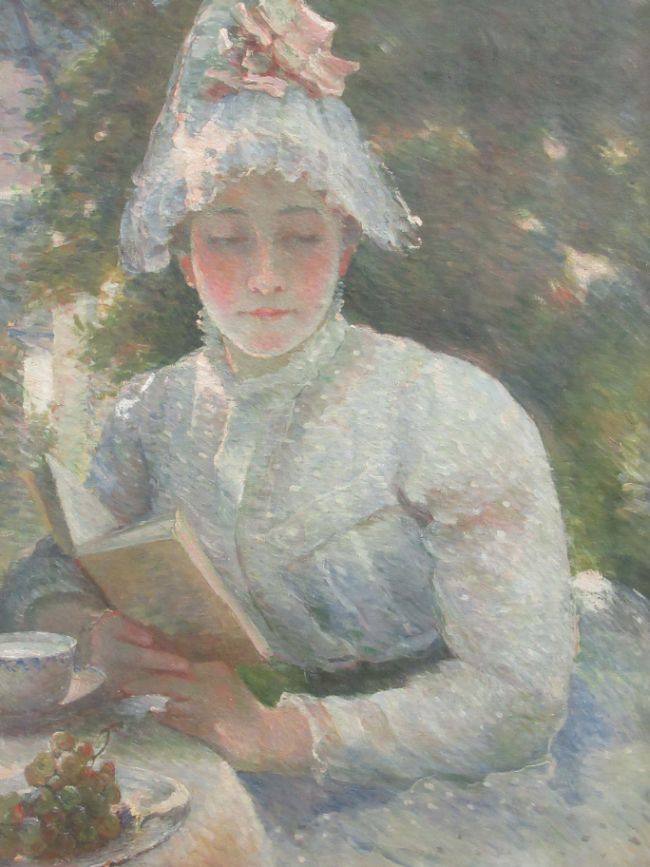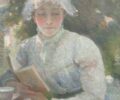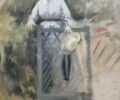Flâneries in Paris: Grandeur around the Pont Alexandre III
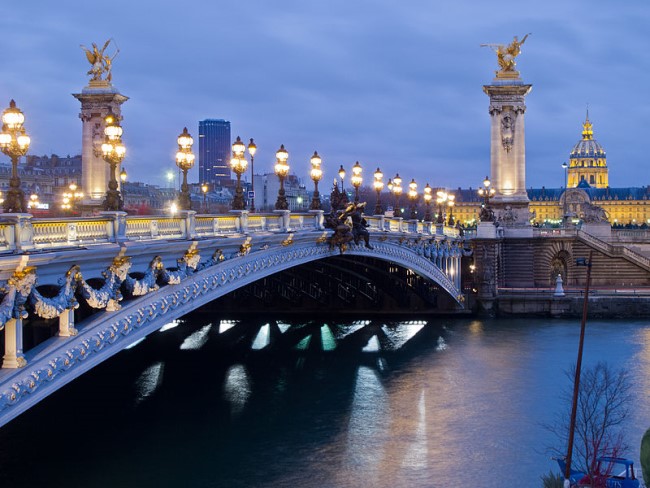
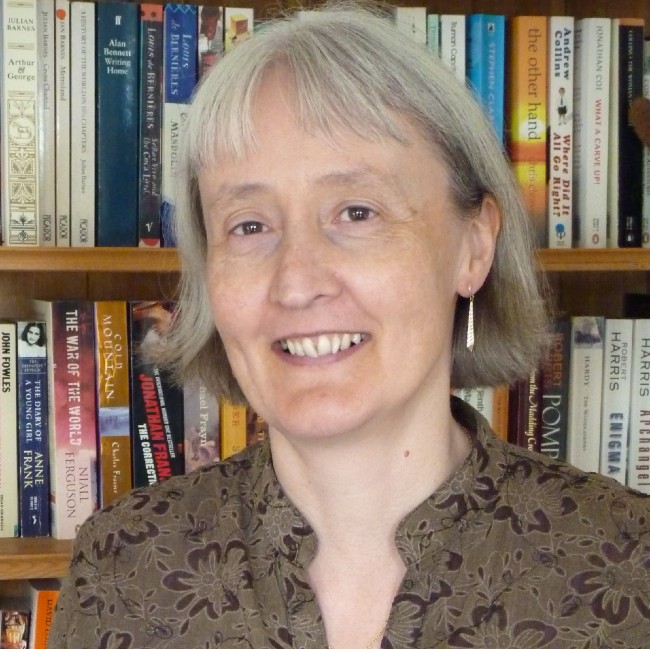
- SUBSCRIBE
- ALREADY SUBSCRIBED?
BECOME A BONJOUR PARIS MEMBER
Gain full access to our collection of over 5,000 articles and bring the City of Light into your life. Just 60 USD per year.
Find out why you should become a member here.
Sign in
Fill in your credentials below.
This is the 17th in a series of walking tours highlighting the sites and stories of diverse districts of Paris.
My walk from the Invalides metro station was a stunner: plenty of blockbuster vistas, a handful of Belle Époque beauties – including the city’s loveliest bridge – and some stirring reminders of the liberation of Paris. Just pick a nice sunny day and you can’t go wrong.

Le dôme de l’hôtel des Invalides. Photo: Daniel Vorndran/ Wikimedia Commons
The first thing I saw on climbing up the metro steps was the glistening dome of the glorious Invalides, set at the end of what must be the tidiest lawn in Paris (do the military mow it themselves?). But today, I’d planned to go in the opposite direction to the Pont Alexandre III. Crossing the river anywhere in central Paris is a treat, but nowhere more so than here. This majestic bridge was built for the Universal Exhibition of 1900 to link the Invalides to the Grand and Petit Palais and to celebrate Franco-Russian friendship. The Russian Tsar, Alexander III, for whom it was named, died in 1894 and so it was his son, Tsar Nicholas II who laid the first stone in 1896.
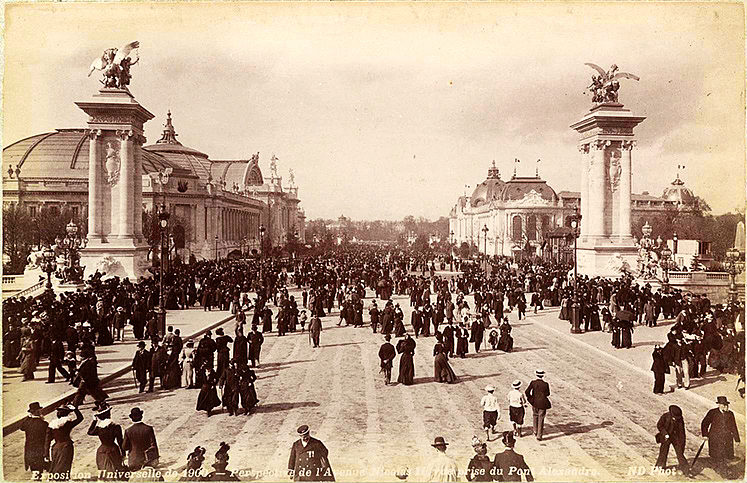
Pont Alexandre III during the 1900 Universal Exposition/ Public Domain
The design brief was daunting. The bridge should be low enough not to disrupt the views, high enough to let boats pass underneath and beautiful enough to be a worthy connection between the Invalides on one side and the two new exhibition halls on the other. I’ve seen it described in French as having a “debauchery of decoration,” and indeed there are four huge golden horses watching over the corners and a whole panoply of statues along its length – lions and cupids, sea monsters and cherubs.
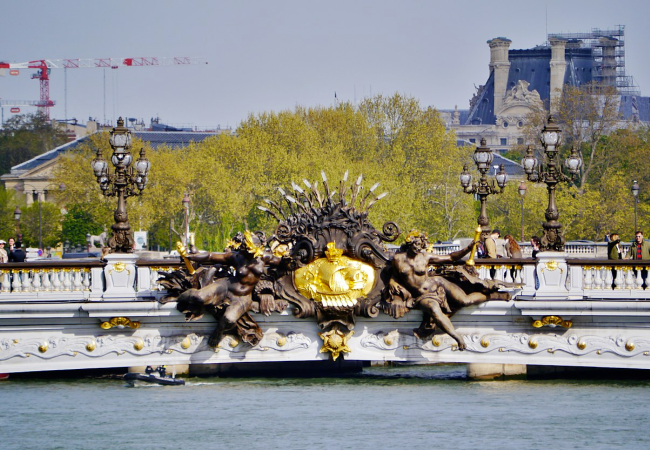
Nymphs of the Seine at the Alexander III Bridge, Paris. Photo credit: Zairon / Wikimedia Commons
In the middle, the Nymphs of the Seine protect the Arms of the City of Paris, along with the Nymphs of the Neva, who are guarding the Arms of Imperial Russia, sending the message that, at least in 1900, all was well with the Franco-Russian Alliance. My favorite feature? The 32 bronze street-lamps, stately in their line-up, yet exuberant in their design. In 1900 they were the very latest thing, being electric. No wonder then, with all these stylish backdrops on offer, that I saw a wedding couple who had brought their photographer here to mark their big day.
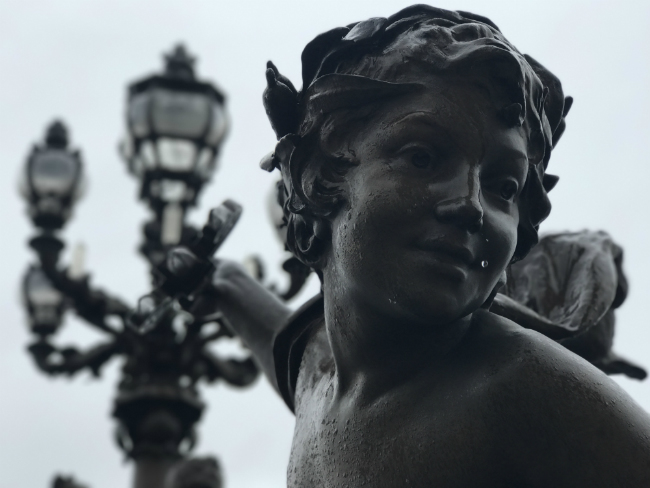
Cherub, Pont Alexandre III. Photo: Theadora Brack
Arriving on the right bank, I went straight ahead into the Avenue Winston Churchill, pausing – of course! – at his statue, just on the corner where the gardens of the Petit Palais begin. The great man is captured in that familiar pose, walking with the aid of a stick, staring resolutely into the middle distance. Beneath his feet, a plaque bearing his words from June 4th, 1940. “We shall never surrender.” Sir Winston loved France, so how fitting that his should be one of the very few statues of foreigners in the French capital. This little area is a good place to reflect on the Liberation of Paris, but first, I popped into the Petit Palais. The permanent exhibition is free, it’s a great way to see inside a Belle Époque building and …. the café is always worth a visit!
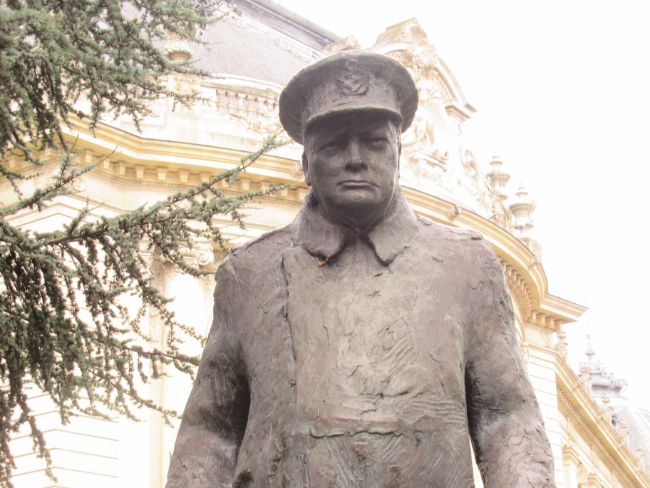
Statue of Winston Churchill in Paris. Courtesy of Marian Jones

Winston Churchill and General Charles de Gaulle walk down the Avenue des Champs-Elysee during the French Armistice Day parade in Paris, 11 November 1944. Credit: Horton (Major), No 5 Army Film. Imperial War Museum. Public domain
It felt grand to sweep up its central steps, then seek out my favorite features, such as the spiral staircase with its beautiful wrought-iron balustrade. Then, I wandered some of the ground-floor rooms with 19th- and 20th-century works, including pieces by Renoir, Pissarro and Gauguin and Monet’s Soleil Couchant sur la Seine à Lavacourt.
I’d been before, but only realized now that there are pieces here by quite a few female Impressionists, including Le Goûter by Marie de Bracquemond and La Servante by Eva Gonzalès. It struck me that their subject matter, here at least, tends to the domestic, a reflection of the lives they led. The garden café, where my café crème came in a glass cup, with one perfect little chocolate macaron, was a good spot to ponder this.

Wrought-iron balustrade at the Petit Palais. Courtesy of Marian Jones
Avenue Winston Churchill leads straight to the Champs Élysées, the quieter end where there are gardens on both sides with lots of benches under well-established trees. I briefly enjoyed the view to my left, which is framed by the Arc de Triomphe, and wondered whether in winter, when the trees are bare, I’d be able to see the Place de la Concorde off to my right.
But the Place Clémenceau, just behind me, has its own attraction, a huge bronze statue of Général De Gaulle, striding out down the Champs Élysées just as he did in August 1944, when the occupation of Paris came to an end. On the plinth are some rousing words from his impromptu speech outside the Hôtel de Ville that day, when he spoke of “Paris outragé, Paris brisé, Paris martyrisé, mais Paris libéré.” Paris outraged, Paris broken, Paris martyred, but Paris liberated!
Respect is also reserved in this area for other main players in the Liberation story, notably two Americans. The Avenue du Général Eisenhower which leads away from Place Clémenceau and curves around the back of the Grand Palais, recalls the period’s Supreme Allied Commander. It leads into Avenue Franklin D Roosevelt, the wartime president whose statement on August 24th, 1944 referred to ‘the joy that entered the hearts of all civilized men and women at the news of the liberation of Paris ….. ‘. As the number of those who lived through these momentous events dwindles away, how right it feels to have them remembered in the heart of the city.
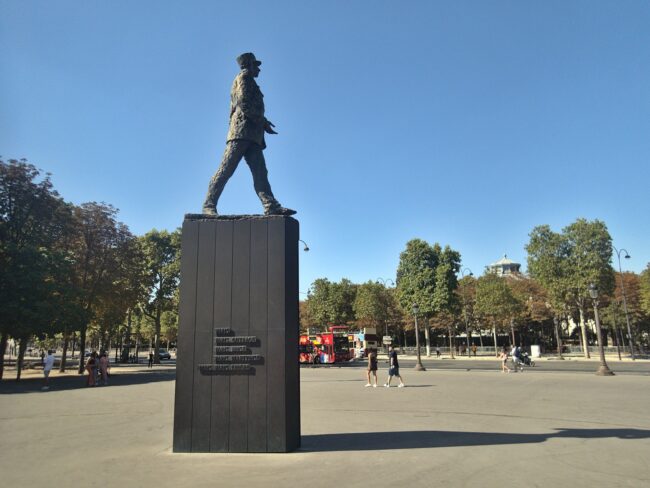
Statue of General de Gaulle. Photo credit: PtiBzh/ Wikimedia commons
I walked around the Grand Palais, built for the 1900 Universal Exhibition, a huge and stylish building whose beautiful glass and steel cupola (very Art Nouveau!) is pointed out by all the guides leading boat trips down the Seine. Over its entrance, an inscription stating its original purpose – to showcase the “gloire de l’art francais,” the glory of French art. t’s closed for renovation until 2024, but there were information panels all along its length, telling its story, from early exhibitions on the new-fangled automobile and aviation industries, through its use as a hospital in World War One and as a truck depot, then propaganda hub during the occupation of Paris. Really, I thought, there are layers of history in every building around here!
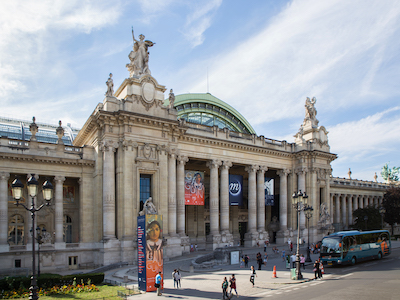
Grand Palais. Photo credit: Gordon Gartrell, Wikimedia commons
I crossed back over the river at the Pont des Invalides, just at the end of the Avenue du Président Roosevelt. Not quite such a stunning bridge perhaps, but one with lovely views to both sides. To my right, the Eiffel Tower and to my left, a chance to view the elegant sweep of the Pont Alexandre III from a distance. And directly underneath me, the day-to-day activities of the river, with pleasure boats and barges to-ing and fro-ing in that timeless way that can blot out all the more dramatic incidents which have taken place here.
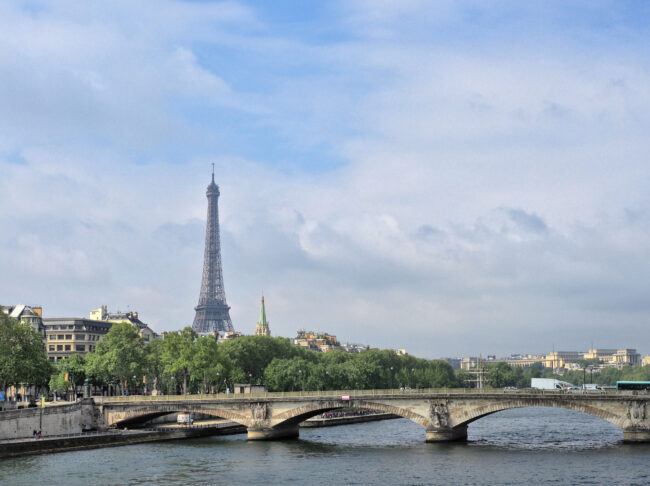
Pont des Invalides. Photo credit: Dmitry Dzhus / Wikimedia commons
Then, a quick stroll down the Boulevard de la Tour Maubourg, past the AUP (American University of Paris) and left into Rue de l’Université took me back to the Invalides. This little spot never seems to change. If the lawns have grown in my hour’s absence, they have been precision-mowed back to perfection. Perhaps someone has given the golden dome an extra polish and the magisterial central Avenue du Maréchal Galieni runs from the Invalides itself right down to the river. Its raison d’être might be military, and I could see canons lined up outside the Invalides building in the distance, but the atmosphere is tranquil. Lines of trees (standing to attention?) punctuate the wide open space and under them, are rows of inviting benches. I decided to linger a little while longer and enjoy the peace.
Lead photo credit : Nighttime view of Pont Alexandre III. © Carlos Delgado/ Wikimedia Commons
More in Flâneries in Paris, Grand Palais, invalides, Paris bridges, Pont Alexandre III, walks in Paris
